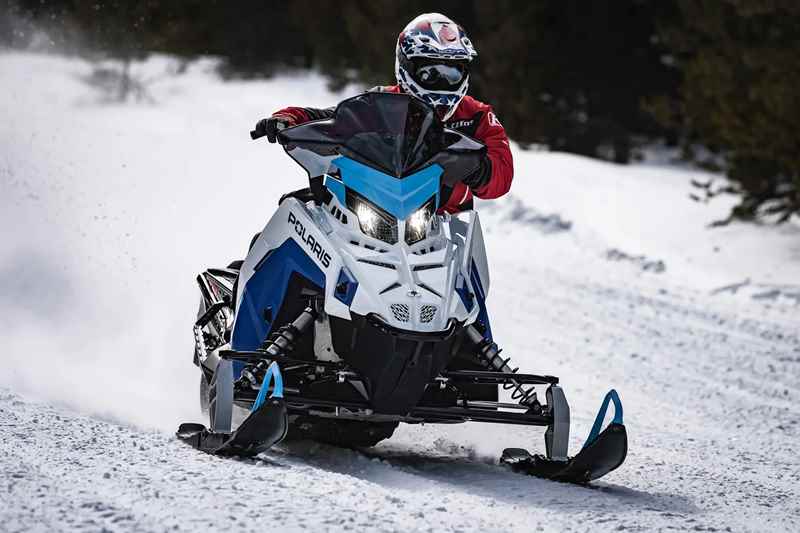Table of Contents
Introduction
What are Polaris Jet Skis?
The, popular term for personal watercraft, jet skis. This gives Incredibly, thrilling sort of rides, they does it, across water surfaces! Is Polaris, a brand sure to be known for innovation, stepped on into this market? They certainly did it,, with models they design for buckets of fun and performance. Combination of power and maneuverability, could we say that? Absolutely! Their jet skis offer just that. Their unique, feature has attracted adventurers, families, and dolphins alike. So, if you’re looking for a sea adventure, these Polaris jet skis may be the pickles’ of your eye.”
What you’re not looking for is gentle sail across the blue. No, this is the rocket, to your picnic. Is time to strap on, your helmet and sink into the waves. Jump on and join the Polaris family.
Features and Specifications
Models varied in engine size, hull design, and seating capacity. Features such as responsive handling and ample storage were common, while higher-end models boasted advanced capabilities like electronic fuel injection and intelligent braking systems.
Performance and Handling
Polaris jet skis were known for their impressive acceleration and top speeds. These PWCs provided smooth rides, precise control, and were well-suited for various water conditions. Their handling made them a favorite among enthusiasts.
Design and Technology
The aesthetic appeal of Polaris jet skis was matched by their technological advancements. With ergonomically designed seats and intuitive control layouts, riders could enjoy both comfort and ease of use when out on the water.
- Maintenance and Reliability:
- Research Maintenance Needs: Different Polaris jet ski models have varying maintenance requirements. Some may need more frequent servicing or specific types of care. Researching and understanding these needs will help buyers plan for the long-term maintenance costs.
- Durability Reputation: Look into the overall reputation of different models for durability. User reviews, industry expert opinions, and reliability ratings can provide insights into how well a particular jet ski holds up over time.
- Storage Considerations:
- Indoor vs. Outdoor Storage: Consider where the Polaris jet ski will be stored when not in use. Storing it indoors, such as in a garage or covered storage, provides better protection against the elements and can extend the watercraft’s lifespan.
- Trailer or Marina Storage: If indoor storage isn’t feasible, explore options like using a trailer or storing the jet ski at a marina. Each option comes with its own set of considerations, including convenience and potential exposure to environmental factors.
- Resale Value:
- Brand Reputation: Strong brands often retain better resale value. Research the reputation of different jet ski manufacturers to gauge the potential for holding value over time.
- Model Popularity: Popular models tend to have higher resale values due to demand. Consider the popularity of the chosen model within the market.
- Overall Condition: Regular maintenance and care contribute to the overall condition of the Polaris jet ski, directly impacting its resale value.
- Local Regulations and Permits:
- Research Local Laws: Be aware of local regulations governing jet ski usage. Some areas may have restrictions on speed, noise, or specific zones where jet skis are allowed.
- Permit Requirements: Ensure compliance with permit requirements. Some regions may necessitate obtaining permits for jet ski operation, and violating these regulations could lead to fines or legal consequences.
- Test Rides and Reviews:
- Hands-On Experience: Take advantage of test rides offered by dealerships to experience the handling and performance of different models. This firsthand experience can provide valuable insights into comfort and suitability.
- User Reviews: Read reviews from other jet ski owners to understand real-world experiences. Pay attention to common issues, positives, and negatives highlighted by existing users.
- Dealer Reputation and Support:
- Customer Reviews: Research the reputation of the dealership by reading customer reviews. A reputable dealer not only ensures a smoother purchasing process but also offers reliable after-sales support.
- Service and Maintenance Assistance: Confirm the availability of maintenance services and the dealer’s willingness to assist with any issues that may arise post-purchase.
- Environmental Considerations:
- Fuel Efficiency: Consider the fuel efficiency of the jet ski. More fuel-efficient models not only save money but also have a reduced impact on the environment.
- Emissions: Explore the environmental impact in terms of emissions. Some newer models may incorporate technology for cleaner and more eco-friendly operation.
- Insurance Costs:
- Coverage Options: Explore various insurance options, including coverage for theft, accidents, and liability. Different models and usage patterns may affect insurance costs differently.
- Budget Considerations: Factor in insurance costs when determining the overall budget for owning a jet ski. Consider the coverage needed based on intended use and potential risks.
Getting Started with Your Polaris Jet Skis
Preparing for Your First Ride
Before hitting the water, new owners should familiarize themselves with their jet ski. Understanding its operations and performing pre-ride checks are crucial steps.in ensuring the safety and efficiency of any vehicle or transportation system. Operations refer to the day-to-day functioning and management of the vehicle or system, including tasks such as scheduling, route planning, and maintenance.
Performing pre-ride checks is a vital step before starting any journey, whether it is driving a car, operating a train, or piloting an aircraft. These checks involve inspecting various components and systems to ensure they are in proper working order. Some common pre-ride checks may include:
1. Inspecting the tires for proper inflation, tread wear, and damage.
2. Checking the fluid levels, such as oil, coolant, and windshield wiper fluid.
3. Verifying that all lights, including headlights, brake lights, and turn signals, are functioning correctly.
4. Testing the brakes to ensure they are responsive and not making any unusual noises.
5. Checking the mirrors and adjusting them for proper visibility.
6. Ensuring that seat belts or safety harnesses are in good condition and properly fastened.
7. Testing the horn and other warning devices to ensure they are working.
By performing these pre-ride checks, operators can identify any potential issues or malfunctions that could jeopardize the safety of passengers or themselves. It allows for timely maintenance or repairs to be conducted, minimizing the risk of accidents or breakdowns during the journey.
Additionally, pre-ride checks help to optimize the performance and efficiency of the vehicle or transportation system. Identifying and addressing any issues beforehand can prevent delays, reduce fuel consumption, and improve overall operational effectiveness.
In summary, operations and pre-ride checks are crucial steps in ensuring the safety, reliability, and efficiency of any vehicle or transportation system. They help to identify and address any potential issues before starting a journey, reducing the risk of accidents and optimizing performance.
Safety Gear and Equipment
Life jackets, lanyards, and fire extinguishers are essential safety gear for any rider. Ensuring you have the right equipment can prevent accidents and increase enjoyment of jet skiing. Here are some safety gear and equipment to consider:
1. Life jackets: Every rider should have a properly fitting life jacket that is approved by the Coast Guard. It should be worn at all times while on the water.
2. Lanyards: A lanyard is a safety device that attaches to the rider and the jet ski, shutting off the engine if the rider falls off. This prevents the jet ski from running unattended.
3. Fire extinguisher: It’s important to have a fire extinguisher on board in case of emergencies. Make sure it is easily accessible and in good working condition.
4. Whistle or horn: A whistle or horn can be used to signal for help or warn other boaters of your presence.
5. Protective clothing: Wearing appropriate clothing such as wetsuits, gloves, and goggles can protect you from the elements and potential injuries.
6. First aid kit: Keep a basic first aid kit on board in case of minor injuries. It should include items like bandages, antiseptic wipes, and pain relievers.
7. Communication device: Consider carrying a waterproof communication device, such as a VHF radio or a waterproof phone case, to communicate with others in case of emergencies.
It’s important to invest in high-quality safety gear and regularly inspect and maintain it to ensure it remains effective. Additionally, taking a boater safety course can provide valuable knowledge and skills to enhance your safety while operating a jet ski.
Insurance Coverage
When owning Polaris jet skis, it’s crucial to have the right insurance coverage to protect yourself financially in case of accidents or damages. Here are some types of coverage to consider:
1. Liability insurance: This coverage protects you if you are responsible for causing injury or property damage to others while operating your Polaris jet skis. It can cover medical expenses, legal fees, and property repairs.
2. Collision insurance: Collision coverage pays for damages to your jet ski caused by a collision with another object or watercraft. It can help cover repair or replacement costs.
3. Comprehensive insurance: Comprehensive coverage protects against non-collision damages, such as theft, vandalism, or natural disasters. It can provide coverage for repairs or replacement if your jet ski is damaged or stolen.
4. Uninsured/underinsured boater coverage: This coverage protects you if you are involved in an accident with another boater who doesn’t have sufficient insurance or is uninsured. It can cover medical expenses and damages to your jet ski.
Maintenance Basics For Polaris Jet Skis
Regular maintenance is key to the longevity of your Polaris jet skis. This includes engine checks, battery care, and hull cleaning. Proper upkeep ensures reliable performance each season.and reduces the risk of breakdowns or accidents.
Engine checks should be performed regularly to ensure that all components are in good working order. This includes checking the oil levels, inspecting the spark plugs, and cleaning or replacing the air filter. It is also important to check the cooling system and ensure that there are no leaks or blockages.
Battery care is essential to keep your jet ski functioning properly. This includes checking the battery’s charge level and ensuring that it is securely connected. If the battery is low, it should be charged or replaced as necessary.
Cleaning the hull of your Polaris jet skis is important to prevent the buildup of algae, barnacles, or other debris that can affect its performance. Regularly inspect the hull for any damage or cracks and repair them promptly.
In addition to regular maintenance, it is important to follow any specific maintenance guidelines provided by the manufacturer. This may include recommendations for engine oil changes, lubrication of moving parts, and other maintenance tasks.
By following these maintenance basics, owners can ensure that their Polaris jet skis remains in good condition and performs reliably each season. This not only enhances the safety and efficiency of the vehicle but also extends its lifespan.
In conclusion, familiarizing yourself with the operations of your jet ski and performing pre-ride checks are crucial for safety and efficiency. Additionally, proper maintenance and care are essential for the longevity and reliable performance. By following these steps, owners can enjoy their jet ski safely and maximize its lifespan.
Legal and Safety Regulations
Understanding local laws and regulations regarding PWC use is imperative. This includes licensing requirements, speed limits, and designated riding areas.
Mastering the Art of Riding Your Polaris Jet Skis
Basic Riding Techniques
Learning to ride effectively requires practice and knowledge of basic techniques. This foundation enhances safety and overall enjoyment on the water.
Throttle Control and Steering
Mastering throttle control helps in managing speed and making smooth transitions. Steering also involves body positioning and balance for optimal maneuverability.
Turning and Maneuvering
Efficient turning requires coordination between throttle input and steering. Practicing in various conditions prepares riders for unexpected situations.
Emergency Procedures
Knowing how to respond in emergencies, such as capsizing or collision avoidance, is critical. Riders should rehearse these procedures to ensure they can act swiftly if needed.
Advanced Tips and Tricks for Polaris Jet Ski Enthusiasts
Performance Modifications and Upgrades
For those looking to get more out of their Polaris jet skis, various modifications can enhance performance. Upgrades can range from simple to complex, depending on the desired outcome.
Enhancing Speed and Power
Modifications like aftermarket impellers or exhaust systems can increase speed and power. However, it’s important to balance these changes with reliability and safety considerations.
Improving Stability and Control
Upgrades such as sponsons or ride plates can improve stability and control, especially at higher speeds or in choppy water. Custom handlebars and seats can also contribute to better rider ergonomics.
Customization and Personalization
Beyond performance, personal touches like custom graphics or upgraded audio systems allow owners to make their Polaris jet skis truly their own.
Safety and Environmental Considerations
Best Practices for Safe Polaris Jet Ski Operation
Safe operation is paramount when enjoying water sports. Adhering to best practices, such as maintaining safe distances from other riders and avoiding reckless maneuvers, protects everyone on the water.and reduces the risk of accidents or injuries. It is also important to always wear a personal flotation device (PFD) and have a whistle or other signaling device on board in case of emergencies.
Environmental Responsibility
Owners should be mindful of their impact on the environment and follow responsible practices. This includes avoiding sensitive habitats, such as seagrass beds or coral reefs, and minimizing noise pollution by adhering to local noise regulations. Additionally, properly disposing of trash and not releasing any pollutants into the water helps preserve the natural beauty of our waterways.
Regular Maintenance and Care
To ensure the longevity and reliable performance of your Polaris jet ski, regular maintenance is essential. This includes:
1. Checking and changing the oil regularly.
2. Inspecting and cleaning the intake grate and impeller.
3. Flushing the engine with fresh water after each use to remove salt and debris.
4. Inspecting and replacing spark plugs as needed.
5. Checking and maintaining proper tire pressure on trailers.
6. Storing the vehicle in a dry, covered area when not in use.
By following the manufacturer’s recommended maintenance schedule and conducting routine inspections, owners can prevent major issues and keep their jet ski running smoothly.
Understanding the operations of your Polaris jet skis, practicing safe riding techniques, and performing regular maintenance are crucial for enjoying your watercraft safely and prolonging its lifespan. By following these guidelines, jet ski enthusiasts can have a fun and thrilling experience on the water while being responsible stewards of the environment.
Environmental Stewardship and Conservation
Riders should also be conscious of their environmental impact. Practices like avoiding sensitive habitats and properly disposing of waste help preserve waterways for future generations.
Conclusion
Final Thoughts on Polaris Jet Skis
Polaris jet skis have left a lasting mark on the PWC industry. They offer a blend of performance, design, and user-friendliness that continues to resonate with enthusiasts. Whether you’re a beginner or a seasoned rider, Polaris jet skis provide an exhilarating way to experience the water.
















